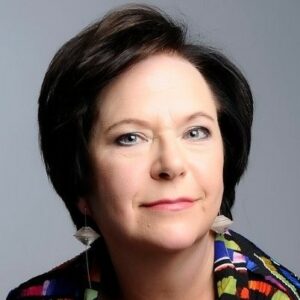 Soroptimist International St Albans and District hosted a special talk on Mon 24 Feb by their esteemed Club Member Beatriz Chadour-Sampson.
Soroptimist International St Albans and District hosted a special talk on Mon 24 Feb by their esteemed Club Member Beatriz Chadour-Sampson.
“THE LIFE OF A JEWELLERY HISTORIAN, CURATOR, AUTHOR, LECTURER
CURATING MUSEUMS AND HOW IT ALL BEGAN”
Soroptimist Beatriz Chadour-Sampson is an international jewellery historian, curator, author and lecturer. Beatriz was consultant curator to the redesigning of the William and Judith Bollinger Jewellery Gallery and guest curator of the ‘Pearls’ exhibition at the Victoria and Albert Museum. London. She curated the Alice and Louis Koch Collection in the Swiss National Museum, Zurich and Gübelin Gem Museum in Lucerne. She spoke to us about her experience as a curator, her passion for jewellery, and art, and how her career has developed, working in historic locations and on-line.
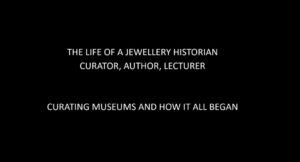 Beatriz kindly allowed us to record her talk so please click here to view the video recording – it is 1 hour 10 mins long: https://www.youtube.com/watch?v=eX1L7VhvtMw&t=35s
Beatriz kindly allowed us to record her talk so please click here to view the video recording – it is 1 hour 10 mins long: https://www.youtube.com/watch?v=eX1L7VhvtMw&t=35s
Please click here to download and view her presentation slides: Curating Museums 2025
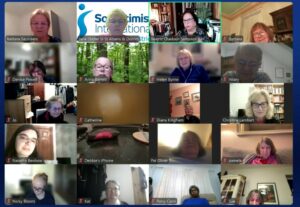 We were delighted that more than 30 people were able to attend the event live and we know that many more want to watch the recording later. Barbara Saunders OBE welcomed Soroptimist Club Members and guests from far and wide. She also introduced the charity that Beatriz has chosen to support for the event, Herts Welcomes Refugees – please scroll down for details. Barbara then introduced Beatriz. Some notes from Beatriz’s presentation are here (thanks to Kat Clark):
We were delighted that more than 30 people were able to attend the event live and we know that many more want to watch the recording later. Barbara Saunders OBE welcomed Soroptimist Club Members and guests from far and wide. She also introduced the charity that Beatriz has chosen to support for the event, Herts Welcomes Refugees – please scroll down for details. Barbara then introduced Beatriz. Some notes from Beatriz’s presentation are here (thanks to Kat Clark):
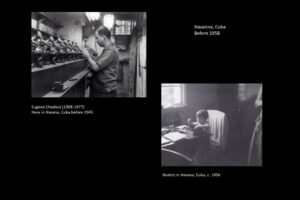 The Life of a Jewellery Historian: Beatriz’s journey began in Cuba where she was born. She was introduced to jewellery by her father who in Cuba learnt to cut diamonds during the war and later ran a business selling gemstones. After leaving Cuba in 1958 he designed jewellery in New York on 47th Street, known then as the Gold and Diamond Alley. In 1963 the family moved to Frankfurt am Main, Germany where her father ran a company for pearls.
The Life of a Jewellery Historian: Beatriz’s journey began in Cuba where she was born. She was introduced to jewellery by her father who in Cuba learnt to cut diamonds during the war and later ran a business selling gemstones. After leaving Cuba in 1958 he designed jewellery in New York on 47th Street, known then as the Gold and Diamond Alley. In 1963 the family moved to Frankfurt am Main, Germany where her father ran a company for pearls.
At 18 she took an interest in Art History and during her PhD on an Italian Renaissance goldsmith in Muenster, Germany, she worked at the Vatican in the archives – where women had to be given special permission to work there. Following this, she obtained a scholarship to catalogue a collection covering 7000 years of jewellery in Cologne. This gave her a first experience curating a jewellery exhibition of 910 pieces. She shared some pictures from the collection.
In the 1980s Beatriz became the Director of the German Goldsmiths’ Society in Hanau where she was plunged into a very public world from being an academic. During this period Beatriz became a Soroptimist as founding member of the Hanau Club. By the late 80s she made the decision to become self-employed.
During the 90s she researched gold jewellery recovered from a Spanish shipwreck of 1638. The jewellery had been underwater for 350 years! It was taken to Singapore to be cleaned and her role included giving advice on the process. Following this she was commissioned to curate an exhibition for the 25th anniversary of the Hannover Art and Trade Fair in 1993 with silver and gold objects from two wrecks of 1622 in collaboration with the Mel Fisher Maritime Museum in Key West. Her role as a curator was to advise on the choice of objects, and devise the design of the displays, creating a shipwreck themed atmosphere with a water soundtrack and displays set up with sandbanks.
 In 1995 she moved to England and joined her husband Raymond in Harpenden. For several years she was consultant curator for the new William and Judith Bollinger Jewellery Gallery at the Victoria and Albert Museum (V&A) in London with nearly 4000 pieces of jewellery, watches and gold boxes. She was responsible for the lay-out of the objects and worked closely with the Education department showing why and when people wear jewellery and it’s special significance. She shared the techniques she employed to work out the arrangement of the jewellery ensuring that each section or board tells a story for the visitor to understand and enjoy. She had to think about the different visitors’ expectations, creating displays that would work for people visiting with a short amount of time and others who would be spending more time in the gallery wishing to learn more. She had to take into consideration the eye level of the visitors and similarly for wheelchair users and ensure that the display is appealing and accessible to all.
In 1995 she moved to England and joined her husband Raymond in Harpenden. For several years she was consultant curator for the new William and Judith Bollinger Jewellery Gallery at the Victoria and Albert Museum (V&A) in London with nearly 4000 pieces of jewellery, watches and gold boxes. She was responsible for the lay-out of the objects and worked closely with the Education department showing why and when people wear jewellery and it’s special significance. She shared the techniques she employed to work out the arrangement of the jewellery ensuring that each section or board tells a story for the visitor to understand and enjoy. She had to think about the different visitors’ expectations, creating displays that would work for people visiting with a short amount of time and others who would be spending more time in the gallery wishing to learn more. She had to take into consideration the eye level of the visitors and similarly for wheelchair users and ensure that the display is appealing and accessible to all.
Sometimes, during the course of putting together an exhibition the curators are able to uncover additional information on the history of the jewellery items and significance of designs.
In the 2012/14 she was commissioned to co-curate the ‘Pearls’ exhibition at the Victoria and Albert Museum in collaboration with the Qatar Museums Authority and write a book on the topic to accompany the exhibition. She shared the reasoning behind the choice of images on the poster and book cover and it’s importance to elicit curiosity from the viewers. The exhibition shared the history of pearl fishing and the natural history of pearls and trade. There were some rare and extraordinary examples of pearl necklaces from the Gulf with diamonds. The loans were sourced from other museums, British aristocracy and the Royal Collection. Sometimes a curator faces challenges when items that are expected are withdrawn at short notice. They have to source replacements that fit within the themes of the exhibition. The invention and development of the creating cultured pearls, which made pearls more affordable for everyone today, formed part of the displays.
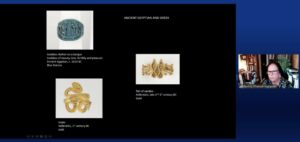 Another permanent display Beatriz worked on was that of the Alice and Louis Koch Collection of rings, today in the Swiss National Museum, Zurich since 2019. The previously private collection goes back four generations beginning in 1904 with about 2500 finger rings today. She authored books on the complete collection in 1994 and
Another permanent display Beatriz worked on was that of the Alice and Louis Koch Collection of rings, today in the Swiss National Museum, Zurich since 2019. The previously private collection goes back four generations beginning in 1904 with about 2500 finger rings today. She authored books on the complete collection in 1994 and 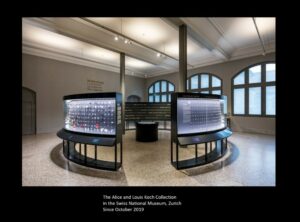 2019. She shared her experience of one of her most challenging displays, a ring-shaped display cabinet with c. 1700 rings. The lighting needed to be right and fitting the rings into the display in the correct order was a very precise process. The exhibition also displayed rings that challenged people’s ideas of what makes a ring a ring, rings made of different materials, including paper from books.
2019. She shared her experience of one of her most challenging displays, a ring-shaped display cabinet with c. 1700 rings. The lighting needed to be right and fitting the rings into the display in the correct order was a very precise process. The exhibition also displayed rings that challenged people’s ideas of what makes a ring a ring, rings made of different materials, including paper from books.
During the COVID pandemic she was asked to curate the Gübelin Gem Museum. The space needed to be designed so that guests would be led through the museum, first learning about the Gübelin family of six generations, then the transition of the company from watchmakers to jewellers, and the importance of the Gem laboratory. Due to restrictions from the pandemic this process was all done remotely. She shared images of the watches, jewellery and early scientific instruments for the analysis of gemstones. One of the displays is a hugely enlarged microphotography of a ruby with its inner life, which was the size of a human. The role of this display was to create impact and draw the visitor into the room. The plaques for introducing the displays throughout the museum, were shaped like a ruby crystal. To illustrate the process of an important necklace with emeralds from mine to market a hologram was used. Beatriz worked on this project from 2020 – 2023 and finally in 2024 she was able to visit and meet the team she had been working with remotely.
Q&A
Q. Do you ever get overwhelmed by the beauty and history of the pieces you’re working with?
A. Beatriz said she doesn’t always know the full history of items at the time when she’s putting the collection together. Often she works with items that are incredibly beautiful in their design but it’s important for her to stay focused on the goal.
Q. You mentioned that jewellery was important in Cuba. Why was that?
A. Jewellery in general was important to people in that part of the world, more than property.
Beatriz explained the reasons behind why people wear jewellery: status, expressions of love, medicinal and functional.
Q. What is your favourite gemstone and why?
A. She doesn’t have a favourite. During press conference she likes to be mysterious and say she has a favourite but does not say.
Q. How difficult is it to prepare and present the V&A courses?
A. Beatriz shared that her personal style is to share lots of images and this can be challenging bringing these images together. She prefers to provide visuals as she feels this is better than just talking.
Q. What is the gender equilibrium in being a curator?
A. There are no barriers to women, but there is a shortage of curators. Beatriz told us that she has mentored a young female curator – everyone has to start at the beginning and learn from experience.
Barbara handed to Jane Slatter to give the vote of thanks. Jane thanked Beatriz for her incredible talk and for sharing her personal experiences. She said “curating is story-telling and we now understand much better how much skill and knowledge is needed to be a good curator. Beatriz demonstrated story-telling at its best with her talk – pulling all the parts of the story together entertain and educate her audience.”
Here are some of the comments in the Zoom Chat about now much people had enjoyed the presentation: “Fantastic talk Beatriz, thank you very much.”Brilliant as always! Thank you so much !!!!!!!”, “every time I listen to Beatriz I learn so much”, “Very informative – beautiful, creative and inspiring – thank you so much, Beatriz.”, “Thank you Beatriz. This has been wonderful.”
Although there was no charge for the event, Beatriz asked participants who would like to make a donation to support Herts Welcomes Refugees, because she and her family were refugees five times over one hundred years. We were able to make a donation of £250 which we know has been very well received.
Click here to read more about when Beatriz spoke to our Club about her experience as a refugee https://sigbi.org/st-albans/iwd22. You can read Beatriz’s biography here: https://jewelleryoutlook.com/personality-profile-beatriz-chadour-sampson-is-a-leading-jewellery-historian-author-and-curator/. Click here to watch a short film made a few years ago about Beatriz’s work as a curator https://www.goldsmithsfair.co.uk/museum-jewellery-curators/.


